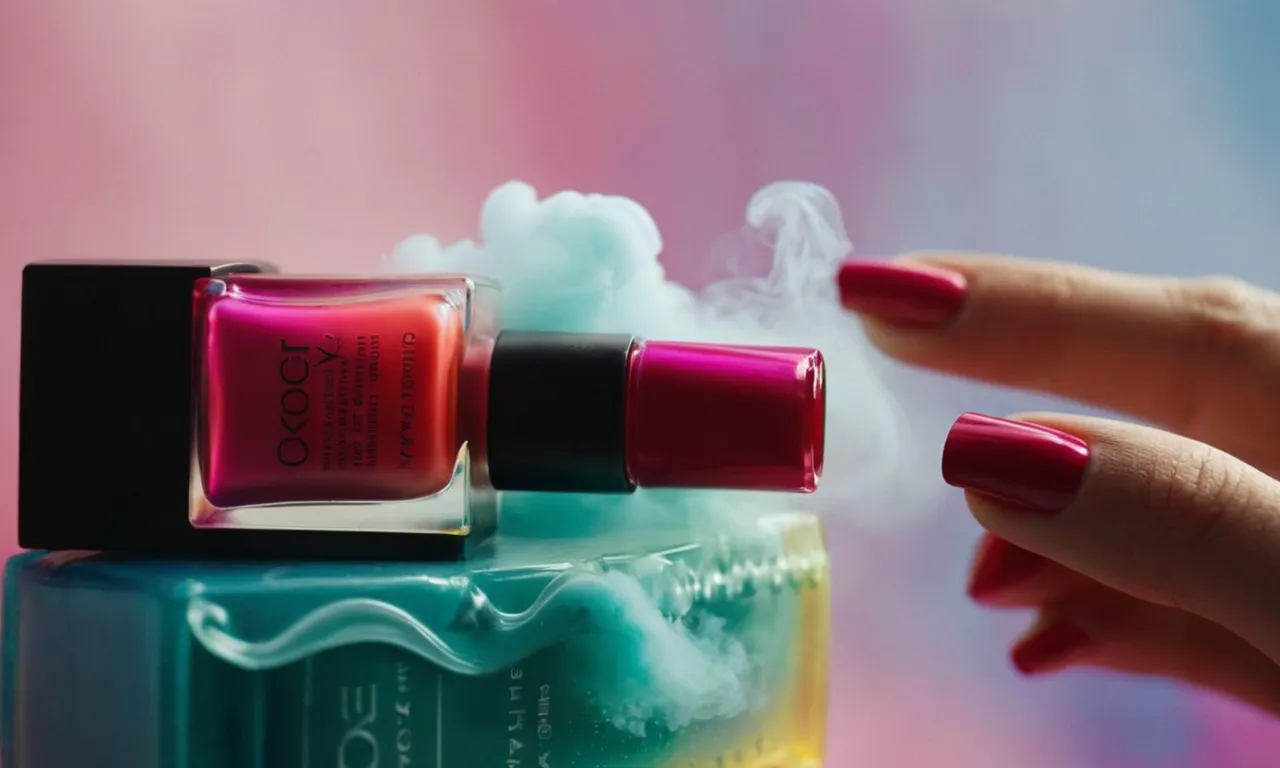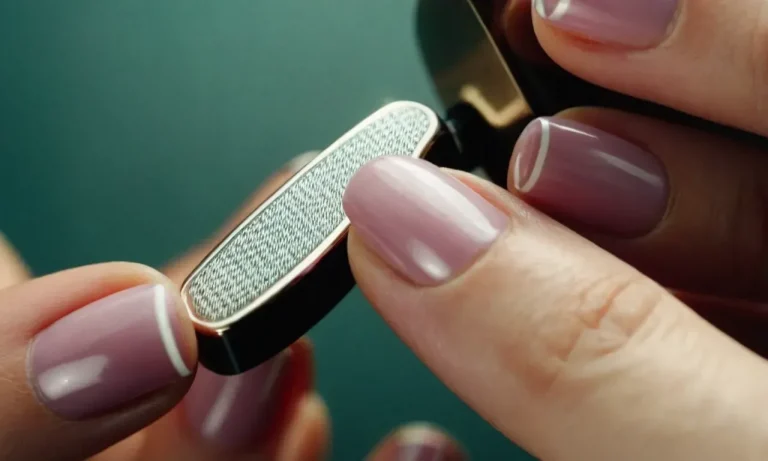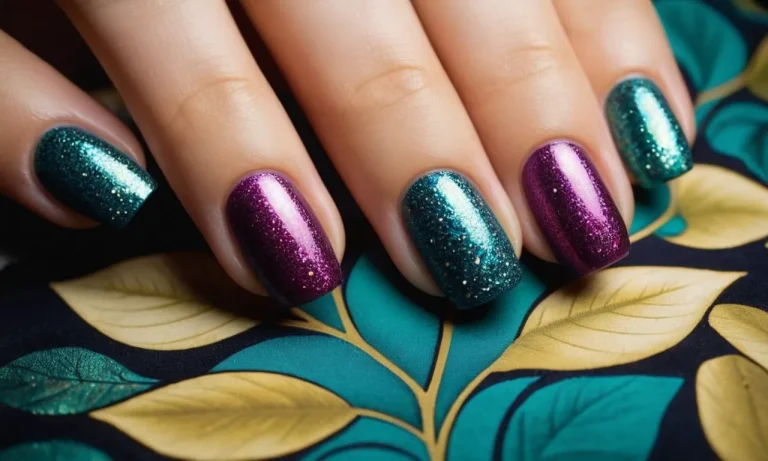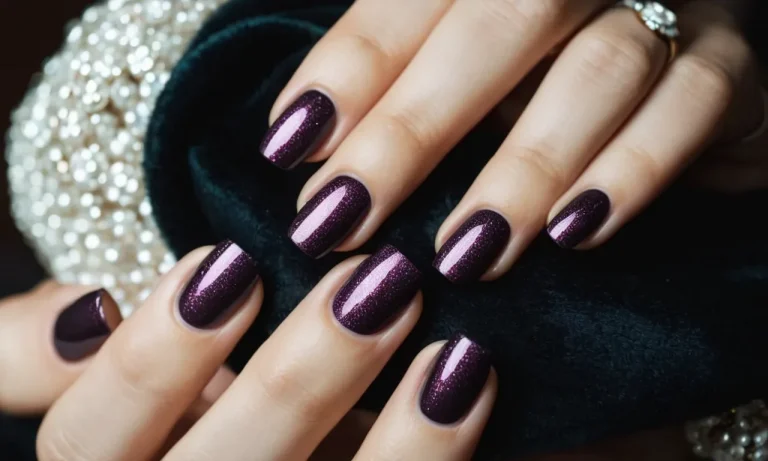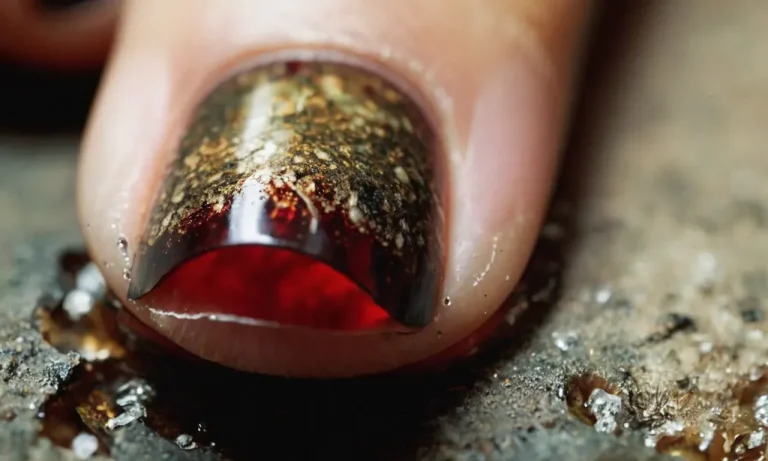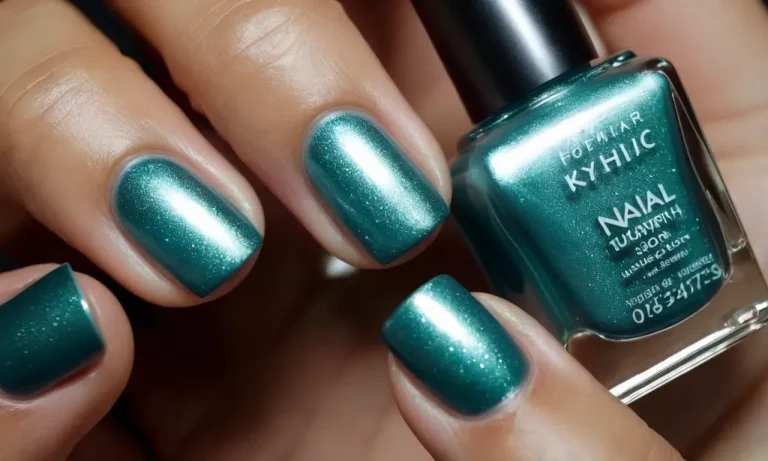Are Nail Polish Fumes Harmful?
Nail polish is a staple in many people’s beauty routines, but inhaling those strong fumes makes some of us wonder if we’re causing damage each time we paint our nails. If you’re short on time, here’s a quick answer to your question: Research shows that nail polish fumes can be harmful if inhaled repeatedly over a long period, but occasional at-home manicures are unlikely to cause issues.
In this comprehensive guide, we’ll explore the ingredients in nail polish that raise health concerns, symptoms associated with exposure to fumes, plus tips for using nail polish more safely.
Chemicals in Nail Polish That May Be Harmful
Formaldehyde
Formaldehyde is added to nail polishes and hardeners to help them dry quickly and keep them from chipping. But it’s a known carcinogen that’s been linked to cancer and breathing problems when inhaled. Short-term exposure can cause eyes and throat irritation, wheezing, and coughing fits.
Although the amounts in nail products are small, repeated exposure over time could potentially cause problems.
Phthalates
Phthalates, namely dibutyl phthalate (DBP), are plasticizers that allow polish to flex and stretch without becoming brittle. However, studies have linked them to hormone disruption, birth defects, developmental issues in children, and reproductive problems.
Many nail polishes now advertise that they’re “3-free,” meaning they don’t contain DBP, formaldehyde, or toluene.
Toluene
Like formaldehyde, toluene is added to polish to help it dry faster and go on smoothly. But long-term exposure to toluene fumes can cause headaches, dizziness, and kidney and liver damage. The EPA says inhaling toluene during pregnancy can harm your baby’s development.
Dibutyl phthalate (DBP)
DBP helps nail lacquer be more flexible and less likely to chip. But studies show DBP is an endocrine disruptor and can cause hormone imbalance, birth defects, and other developmental issues, especially in young boys.
That’s why more polish brands are now “3-free” and don’t contain DBP, formaldehyde, or toluene.
Short-Term vs. Long-Term Exposure to Fumes
When using nail polish, it’s impossible to avoid inhaling at least some fumes given off as the polish dries. However, the extent of exposure varies greatly depending on usage habits. Both short- and long-term exposure carry potential risks.
Short-Term Exposure
Using nail polish infrequently or occasionally typically constitutes short-term exposure. For example, painting your nails once every couple of weeks or only for special events would fall into this category. The good news is that limited use keeps your overall exposure low.
Potential short-term effects include:
- Mild respiratory irritation
- Headaches
- Dizziness
- Nausea
These symptoms tend to be temporary and resolve once exposure stops. So if you start to feel unwell when painting your nails, moving to a well-ventilated area or taking a break can help minimize discomfort.
Long-Term Exposure
Frequent or heavy nail polish use constitutes long-term exposure. For instance, painting your nails multiple times per week or applying many coats with each use would fall into this high exposure category. Prolonged contact with fumes raises potential health risks.
Possible long-term effects include:
- Chronic respiratory issues
- Kidney and liver damage
- Harm to the nervous system
- Increased cancer risk
Additionally, regular exposure over many years may exacerbate asthma and allergies in sensitive individuals. Pregnant women also face elevated risks to their health and fetal development from extensive chemical exposure.
| Exposure Duration | Short-Term | Long-Term |
|---|---|---|
| Typical Usage Frequency | Infrequent or occasional use | Frequent or heavy use |
| Potential Health Effects | Mild, temporary irritation | Chronic conditions and organ damage |
Clearly, problematic exposure builds over time with extensive nail polish use. But even occasional users should take precautions like painting in well-ventilated rooms. Overall, moderation remains key to limiting risks from fume inhalation.
Tips for Using Nail Polish More Safely
Work in a Well-Ventilated Area
When using nail polish, it’s important to work in an area with good airflow and ventilation. Nail polish contains chemicals like formaldehyde, toluene, and dibutyl phthalate which can be harmful if inhaled in large quantities or over a long period of time.
Working near an open window, using a fan, or turning on your AC can help keep fumes from building up and circulating.
Take Breaks
Give yourself regular breaks from polishing to minimize exposure to fumes. Step outside for some fresh air, or at the very least, walk away to another room for 10-15 minutes. This allows the fumes to dissipate instead of lingering around you.
Taking breaks also gives your nails time to dry between coats. Rushing through multiple coats back-to-back means more wet polish releasing more vapors.
Consider 3-Free or 5-Free Formulas
Many brands now offer nail polishes formulated without the “toxic trio” of chemicals – formaldehyde, toluene, and dibutyl phthalate (DBP). These are labeled as “3-free” polish. Even better, some brands remove two additional chemicals, xylene and camphor, creating “5-free” formulas.
Using these safer polishes can reduce your exposure to potentially harmful ingredients like:
- Formaldehyde – Suspected carcinogen
- Toluene – Linked to issues with fertility and fetal development
- Xylene – Associated with nervous system toxicity
While no polish is 100% fume-free, 3-free and 5-free options are designed to be lower-risk alternatives. Popular brands making these safer polishes include Orly, Zoya, and OPI.
| Number of chemicals removed | Definition |
|---|---|
| 3-free | Excludes formaldehyde, toluene, and DBP |
| 5-free | Also excludes xylene and camphor |
By being mindful about proper ventilation, taking breaks while polishing, and choosing safer formulas, you can breathe a little easier and enjoy gorgeous nails. For more information, check out sites like Healthline and the American Cancer Society.
Conclusion
While many enjoy decorate their nails with polish, it’s wise to be aware of potential health impacts from chemical fumes and take simple precautions. Limiting exposure by working in ventilated rooms, using safer formulas, and taking breaks can allow you to enjoy an occasional DIY manicure safely.

